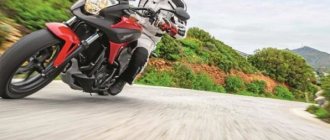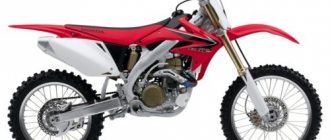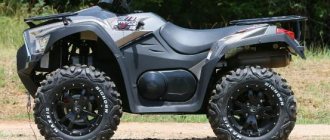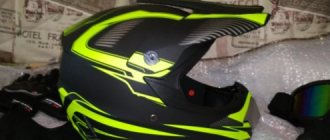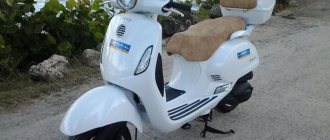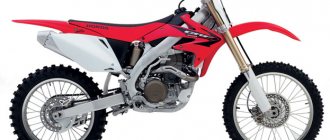SPICY
| Safety Helmet Evaluation and Rating Program | |
| SHARP Logo - UK Motorcycle Helmet Rating | |
| Status | Active |
| The year has begun | 2007; 14 years ago (2007) |
| Organization | Department for Transport (DfT) |
| Basic Standards | British Standards BS 6658, ECE Regulation 22 |
| Domain | Motorcycle helmets, road safety |
| License | Copyright of the British Crown |
| Web site | https://SHARP.dft.gov.uk |
SHARP
Rating Scheme
is a British government system for assessing the quality of motorcycle helmets, established in 2007 [1] to improve the safety of motorcycles on UK roads.
The helmets selected for testing by SHARP are purchased from retailers. [2] This ensures that the helmets tested by SHARP are exactly the same as the helmets that British motorcyclists can buy. [2] The helmets are tested, seven for each model, using 32 tests to determine the amount of protection they provide to the brain during impacts at different speeds, both from flat surfaces and from curbs. [2] It rates helmet models from one to five stars, with five being the highest, [1] and states that a five-star helmet "provides a good level of protection around the helmet." [3]
Nigel Mills of the University of Birmingham criticized the SHARP scheme in a 2009 paper examining its rotational acceleration testing [4], despite the fact that SHARP used the testing procedures specified in British Standards BS 6658, as well as the United Nations World Forum on Harmonization Rules for vehicles EEC Rule 22. The UK's Transport Research Laboratory (TRL) provided a detailed response to Nigel Mills' paper in November 2009. [5] SHARP stress that, regardless of their own ratings, all helmets sold in the UK have been certified to the applicable legal standard, namely ECE R22. [6]However, it also states that there is a 70% difference in protection between a one-star SHARP rating and a five-star rating. [3]
SHARP has been awarded two prestigious road safety awards; The Prince Michael International Road Safety Award (2013, motorcycle category)[7] in recognition of outstanding contribution to improving road safety, and the Fédération Internationale de Motorcycle (FIM) annual road safety award recognizing achievements in assisting motorcyclists. [8]
Some motorcycle helmet retailers—and many riders around the world—use SHARP star ratings as a selection criterion.
Certimoov rating in France
Similar to SHARP, work on a similar program in France began in 2014. The MAIF Foundation, in partnership with the University of Strasbourg, started a project that resulted in Certimoov. [9]
Certimoov testing recreates oblique impacts and integrates a new brain model to measure the impact of impact on the brain. Certimoov test results rank helmets by safety level - similar to SHARP using a star rating from 0 to 5.[10]
In addition, Certimoov also tests bicycle helmets.
Caberg Modus Silver XS
Low aerodynamic resistance Country: Italy Average price: 13,100 rub. Rating (2019): 4.6
The somewhat angular shell shell and small chin section of the helmet give the inexpensive Caberg Modus Silver XS high aerodynamic characteristics. This advantage becomes especially noticeable when driving a motorcycle at high speed - the pilot’s head perceives air flows as a single whole with the bike, which ensures quite comfortable driving.
When riding ATVs, the chin part of the helmet easily rises with a fixation at the top, turning the Caberg Modus Silver XS into an open helmet, most comfortable at low speeds. The motorcycle helmet has a transparent and sun visor, and the first has an anti-fog inner layer. Ventilation channels inside the case create uniform airflow throughout the head. Adjustable intake grilles are located in the chin area (provides glass ventilation) and the frontal part. The inner fabric lining is treated with the best hypoallergenic impregnation SANITIZED, which makes it impossible for the development of microbial parasites.
References
- ^ ab "SHARP Helmets - Frequently Asked Questions". SHARP.dft.gov.uk
. SHARP helmets. Retrieved April 9, 2021. - ^ abc "SHARP Helmets - SHARP Testing". SHARP.dft.gov.uk
. SHARP helmets. Retrieved April 9, 2021. - ^ ab "SHARP helmets - ratings". SHARP.dft.gov.uk
. SHARP helmets. Retrieved April 9, 2021. - Jump up
↑ Mills, N. J. (2010).
"A Critical Evaluation of the SHARP Motorcycle Helmet Rating" (PDF). Int. J. Crashworthiness
.
Metallurgy and Materials, University of Birmingham. 15
(3): 331–342. DOI: 10.1080/13588260903251000. S2CID 44355566. - "Technical response to Nigel Mills' paper". TRL.co.uk.
_ - "SHARP Helmets - Impact Zone Diagrams". SHARP.dft.gov.uk
. SHARP helmets. Retrieved April 9, 2021. - "Prince Michael International Road Safety Award". RoadSafetyAwards.com
. RoadSafe. Retrieved December 22, 2013. - "SHARP Helmets - Frequently Asked Questions, page 2". SHARP.dft.gov.uk
. SHARP helmets. Retrieved April 9, 2021. - “What is the certimoov project? | Certimoov".
- «Home | Certimoov".
Latest posts Popular The most interesting motorcycle news
you are reading the most popular news you are reading all the news you are reading the latest news read the most popular read all the news read the latest news
This is an independent helmet safety assessment program launched in the UK back in 2007 and funded by the Department of Transport, which rates helmets out of five based on laboratory testing.
As a result, to date only 58 of the 380 models tested by SHARP have received the maximum rating of 5 stars .
SHARP's mission is to provide motorcyclists with clear guidance on how to select a suitable and comfortable helmet and to provide them with clear, unbiased and objective information about the relative safety of motorcycle helmets.
I would like to believe that all manufacturers comply with the accepted minimum safety standards. But not all of them strive to exceed this minimum and produce products whose protective properties will be much higher than required.
Nothing in the world works at the same speed - and neither does SHARP. Each crash occurs for different reasons with a different set of variables, so the testing system allows for a much wider range of impact speeds than standard regulations. Moreover, SHARP analyzes international accident studies, which makes it possible to more fully determine the starting points of accidents.
For each model, 32 tests are carried out on 7 helmets of different sizes, assessing how well each of them will protect the head in the event of an accident. To ensure even greater testing reliability, employees only test helmets that they personally purchase from different retail outlets. The helmets that are tested are those that are available on the market for any consumer and that anyone can freely buy.
Each helmet hits a surface equivalent to the road or curbs at different speeds to ensure it provides reliable head protection at both high and low impact forces. Although the risk of injury is reduced in less serious accidents, it can still have serious and irreversible consequences.
Some helmet safety rating systems test the same area twice. SHARP believes that there is no evidence to show that a motorcycle accident could result in a helmet being impacted more than once in the same location. He can receive several hits at once, which the program tests - but they are all located at different points on the helmet.
Let's say you decide to check your helmet's SHARP rating and find that it has a lone star rating. Does this mean that he is good for nothing? No. All helmets that receive at least one star meet at least one safety standard, meaning they provide at least a minimum level of protection in the event of a crash.
Will this save anyone's life? Need I say once again that motorcyclists are the most vulnerable creatures on the road, they make up 3% of all traffic in the Russian Federation and are involved in 23% of tragedies annually. In the UK the figures are about the same. Research has shown that 50 lives could be saved each year if all motorcyclists chose helmets with a high SHARP rating.
Caberg Modus Silver XS
The somewhat angular shell shell and small chin section of the helmet provide the Silver XS with high aerodynamic characteristics. This advantage becomes very noticeable when driving a motorcycle at high speed - the pilot’s head perceives air flows as one whole with the bike, which ensures quite comfortable driving.
When riding ATVs, the chin section of the helmet can be easily raised and secured at the top, transforming the Caberg Modus Silver XS into an open-face helmet
, quite comfortable at low speeds. The motorcycle helmet has light transmission and a sun visor, and the first has an anti-fog layer located inside. Ventilation channels in the middle of the body provide equal airflow throughout the entire head. Adjustable intake grilles are located in the chin area (provides glass ventilation) and the frontal part. The inner fabric lining is finished with the best hypoallergenic impregnation SANITIZED, which makes it impossible for the development of microbial parasites.
Outer shell
The outer shell is one of the most important elements of the helmet. It prevents a sharp stone or other object from penetrating the relatively “soft” EPS foam inside. After serious falls, scuffs and cracks appear on the shell, which indicate the need for replacement.
How to check? Press the helmet with your hands and see if the shell splits somewhere or if dents remain. In normal conditions, the crack may not be noticed, but when the helmet becomes deformed and twisted, it is easy. If noticeable dents remain on the helmet, most likely there is already broken foam under the shell, which usually happens with cheap helmets. The shell of expensive helmets is made of special plastic, fiberglass or carbon, which is almost impossible to make a dent on; if there is one, it’s definitely time to change the helmet.
Fading paint is one of the natural signs that it is time to change the helmet, and not paint it, as some thought. Constant exposure to ultraviolet radiation has a detrimental effect on plastic and it becomes brittle. This point practically does not apply to carbon fiber helmets; they confidently withstand the effects of UV rays.
Recommendations for choosing a helmet for motorcycles
Types of helmets
. You should start choosing a motorcycle helmet by studying the varieties of this accessory.
- The most popular version for motorcyclists is the FullFace
. It features a maximum degree of protection and excellent aerodynamics. The design provides full protection of the head and face. In addition, FullFace helmets can be used in conjunction with neck protection. Such products can be seen both among urban motorcyclists and professional athletes. - Flip Up
design has much in common with the line discussed above . It is popularly called a modulator. The difference is the folding front part along with the “chin”. This gives an advantage in speed of removal, and also the motorcyclist can drink water without completely removing the helmet. Most often, modulators are purchased by travel enthusiasts and supporters of comfortable driving. But the movable base increases the weight of the structure. - Braincap
helmets have several common names (“bowler hat”, “helmet”, “three quarters”). The line of these products has an open face. Although recently modifications with a visor or visor have appeared. Braincap is purchased by owners of cruiser motorcycles, choppers, as well as scooters and mopeds. But some models do not have a safety certificate, and riding in such helmets requires moderate speeds. - Cross helmets
have a characteristic elongated front part. This is done to make breathing easier for athletes during high physical activity. Thanks to the long visor, the rider's face is protected from bright light, dirt and water. A special mask can be used as a visor. Cross motorcycle helmets are bought by fans of ATVs and stunt riding. Some modifications are equipped with a movable chin part. - Snowmobile helmets
differ from classic designs in a number of features. Firstly, the visor has a two-layer structure. This approach allows you to successfully combat fogging. Secondly, some manufacturers equip their products with heated visors. And finally, there is a special channel in the design for air to escape from inside the helmet.
Main factors when choosing.
To choose the right motorcycle helmet, experts advise sticking to the following scheme.
- First you need to decide on the model, based on your driving style and personal preferences.
- Next comes the choice of design. A FullFace helmet is matched to a sportbike, and a Braincap to a chopper.
- Price should not be the main factor. If you can save money on motorcycles, then safety should come first. To save a little without sacrificing your health, you can choose a single-color color.
We have selected 12 of the best helmets for motorcycles and ATVs for review. All of them are sold on the domestic market. When compiling the rating, the opinions of experts and reviews of Russian motorcyclists were taken into account.
Choosing a motorcycle helmet by type
There is a huge selection of equipment for motorcyclists on the market, which makes the choice even more difficult. Therefore, you need to understand what types of motorcycle helmets are and how they differ.
Open motorcycle helmets
An open-face helmet is the simplest option. It does not have special elements that could protect the face. The exception is models with a visor. This category includes halves (braincap and shell models) and products that protect ¾ of the back of the head. Their difference is an open chin and airflow on the face while riding. The advantages of this type of motorcycle helmet include:
- maximum visibility;
- high-quality ventilation;
- freedom of movement;
- light weight;
- budget cost.
But when buying an open motorcycle helmet, you need to be prepared for increased audibility and minimal protection. They are suitable only for fans of leisurely riding, owners of mopeds, scooters, choppers, heavy motorcycles and electric scooters for adults.
Equipment is the key to safety
Closed motorcycle helmets
Closed helmets, in turn, are divided into integrals and modulars. The first type is different in that the motorcyclist's head is completely protected. Its advantages are as follows:
- excellent sound insulation;
- minimal aerodynamic drag;
- high-quality and reliable protection from wind, dust and injury in the event of a fall or accident.
But integrals also have disadvantages:
- when parked or when driving at minimum speed, such a helmet will be hot even if there are ventilation holes;
- significant weight.
This model is suitable for owners of sports motorcycles and will be completely uncomfortable for those who are just learning to ride.
Closed helmet
Modular is a cross between an open motorcycle helmet and an integral helmet. This model always has a chin arch that can be raised. Their advantages include:
- high level of protection;
- better ventilation compared to integrals;
- Convenient for motorcyclists who wear glasses.
Disadvantages include heavy weight and high cost.
It is important to choose a helmet based on your needs
These options are recommended for those who ride long distances. And for beginners who are just mastering a motorcycle, it is better to choose another model. We offer you to choose a high-quality and comfortable full-face helmet in the catalog of our store.
Cross motorcycle helmets
Cross helmets are also called full-face or off-road. They are distinguished by the presence of a protruding part at the level of the chin and a visor, the task of which is to protect from dust, dirt, wind and sunlight. A cross motorcycle helmet is suitable for motocross participants, as it has high-quality ventilation, allowing the motorcyclist to withstand significant loads. You can also use it when riding a buggy or ATV.
Cross helmet
Enduro helmets
Enduro, or off-road motorcycle helmet, is suitable for lovers of this type of riding. An enduro motorcycle helmet is capable of providing high-quality protection for the rider. It has a protruding chin guard, high-quality ventilation and a sun visor.
Enduro helmet
Clasp and straps
There should be no damage, tears or abrasions on the straps. Otherwise, the chance that the straps will break and the helmet will fly off when dropped is greatly increased. Unfortunately, if the strap is damaged or torn, the helmet will have to be replaced, since they do not make repair kits for replacing it, and manufacturers strongly do not recommend changing the strap yourself. This is not done for the sake of greed, but for safety. In home-made conditions, securing the strap as well as it was done at the factory is very problematic.
The D-ring fastener is rightfully considered the safest; it is used in motorcycle helmets and even in the world of serious car racing, such as Formula 1. During normal use, it is almost impossible to damage it, and it holds the helmet very tightly, which cannot be said about the fastex type fastener. From the outside, fastex resembles a trident; the outer teeth tend to wear out and break if handled carelessly. Be careful if you use such a helmet and monitor the condition of the clasp. There are also fasteners with powerful neodymium magnets, and there are very rarely any problems with them:
Quality Compliance Stickers
If the helmet itself has stickers marked CPSC, ASTM, Snell, EN 1078 or DOT, this indicates the quality of the helmet itself. Older, cheaper helmets did not have these markings, and they do not guarantee you protection by modern standards. If there is no such sticker and it was not originally on the helmet, then it is better to replace it with a better one.





